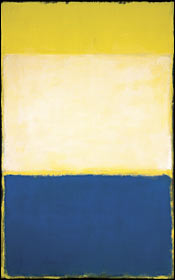
In the atrium of the new Museum of Modern Art, Monet’s Water Lilies, which had a contemplative gallery to itself in the old building, now faces off against Barnett Newman’s Broken Obelisk. It’s yet another sign that modern and contemporary art have begun to eclipse Impressionism and Post-Impressionism, at auction and in the public eye. At Sotheby’s spring sale of Impressionist and Modern Art, the Rose Period Picasso Boy With a Pipe fetched an astonishing $104 million, breaking the record of $82.5 million set in 1990 by Van Gogh’s Portrait of Dr. Gachet. At the fall auctions, records were set for works by Jasper Johns, Barbara Kruger, Richard Prince, and Mark Rothko, among others. And according to Forbes, prices for the top 2 percent of contemporary artists have risen 72 percent over the last three years. Impressionist paintings of extraordinary quality and provenance can still spark bidding wars—at Christie’s on November 3, Monet’s view of Parliament went for some $20 million, just about its high estimate plus commission. Such works rarely enter the market; a good number are in the hands of museums. Even the Monet, however, fetched less than a Mondrian Boogie-Woogie ($21 million) and Modigliani’s portrait of Jeanne Hébuterne ($31 million). Meanwhile, a Renoir that in 1997 brought $11.5 million went for just $4 million.
There are other factors, economic and cultural, behind the shift. As museums buy more contemporary art, work by those artists becomes desirable. Patronage also changed this year, as hedge-fund managers with a high tolerance for risk have entered the game, and the art fairs—like London’s Frieze Art Fair (in its second year) and this month’s Art Basel Miami Beach (in its third)—have become the definitive places to spend and be seen. Also significant, says dealer Jeffrey Deitch, is “a younger group of artists whose work is very collectible.” Thus the NADA (New Art Dealers Alliance) fair, held during Art Basel in Miami, was overrun in its opening hours by speculators eager to find the next John Currin—or Dana Schutz, or Hernan Bas, or Christian Holstad; several dealers covered the cost of their booths in a matter of minutes. The youthquake isn’t limited to artists, either. More young people are buying art today (and swelling the ranks of MoMA’s Junior Associates, where membership is up by about 50 percent, and the New Museum’s New Group, up by 23 percent). These collectors don’t have their parents’ taste, and they don’t necessarily want to see a Degas over the Knoll sofa. “Impressionism doesn’t fit today’s lifestyle,” says Chelsea dealer Matthew Marks. “The paintings come with big, carved gold frames.”